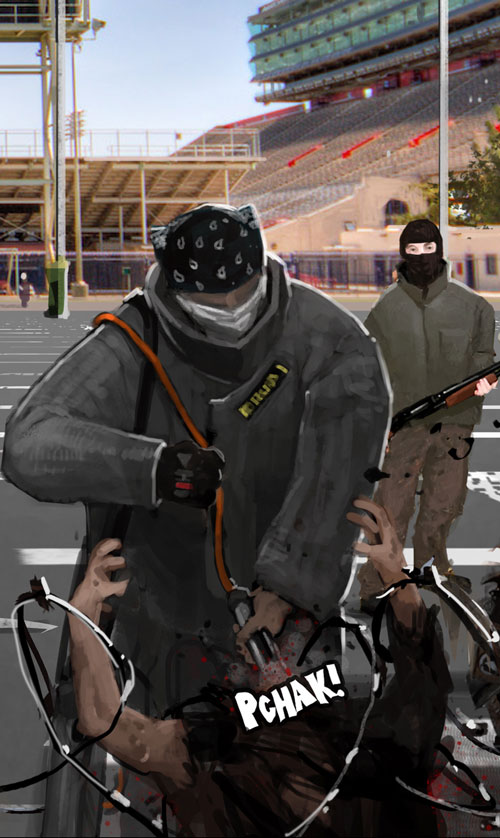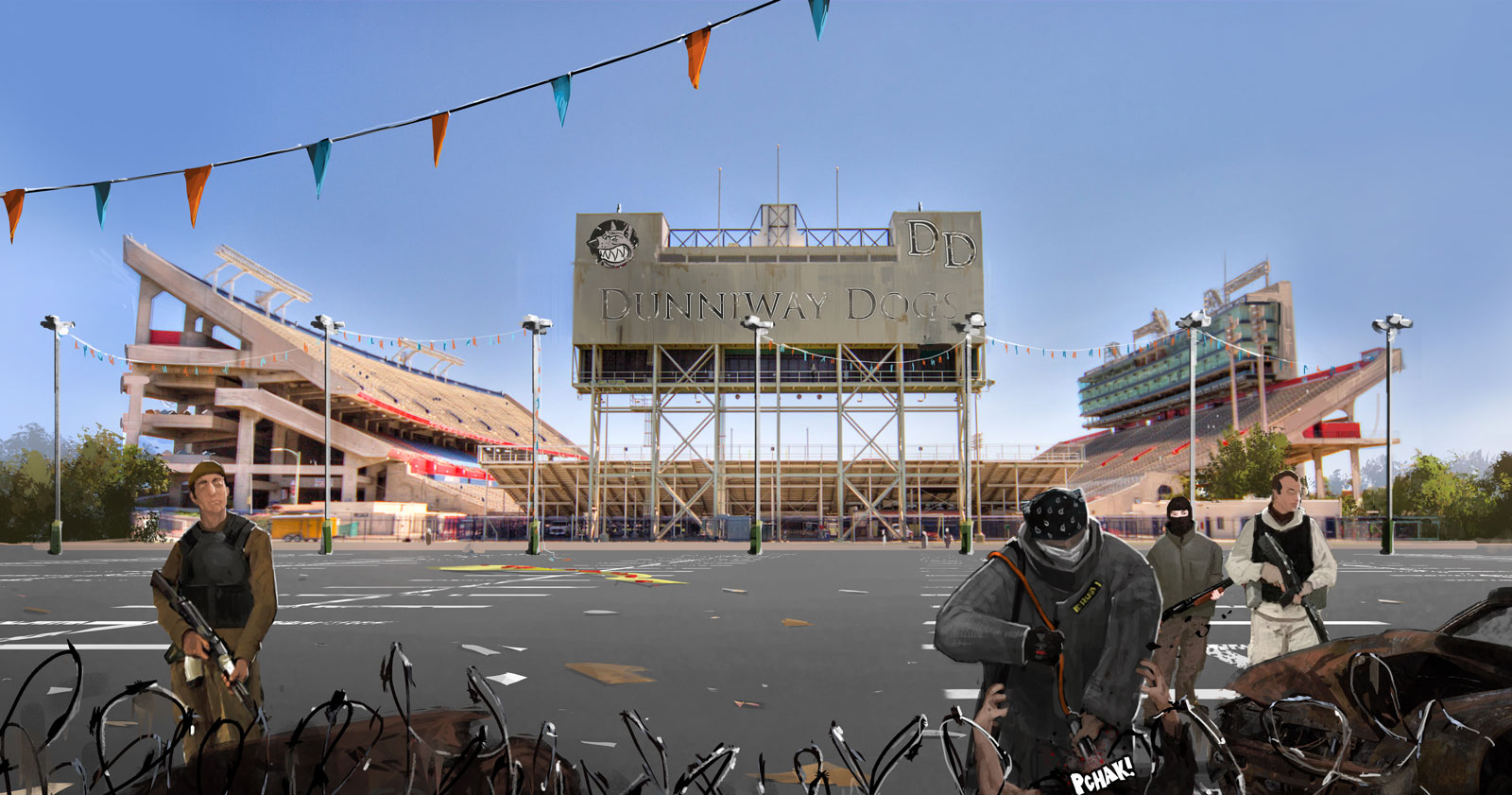My infatuation with video games began at the dawn of the 80s, prime time for coin-operated arcade games. I grew up in California’s Santa Cruz mountains and during this era every pizza parlor, bowling alley, mall, roller rink, amusement park and grocery store had a collection of these machines. As a kid I didn’t have money to really play the games, so I would spend all my time checking out their graphics. The arcades were an art gallery to me — I loved things like the endless scrolling landscapes of Xevious and Spy Hunter, the explosions in Defender and Asteroids, the 3D vector art of Battlezone and Tempest, and the faked 3D of Zaxxon, Marble Madness and Paperboy. Outside of the arcades, movie theaters were showing the first films with computer animation: The Last Starfighter and Tron.
I knew then that somehow, somewhere, I would be making art with computers when I grew up.
Santa Cruz is just over the mountain from Silicon Valley, so it was common for my friends’ families to have some sort of desktop PC. I loved IBM PC games like Microsoft’s Jet, Electronic Art’s Starflight and all the Infocom text games like Zork and Planetfall. During my first year of high school, I saved up enough money to buy a Commodore 64 with the intention of learning how to program in Assembly and make my own video game. But instead of making games, I just spent all of my time playing them — the Commodore’s library was impressive, and I enjoyed whole summers experiencing classics like Elite and Ultima IV. Then, in 1985, a new console from Japan called the Nintendo Entertainment System came out with graphics that were as good as coin-op games. Soon, all the VHS movie rental stores started renting out Nintendo games.
These were glorious times.
 In college, I majored in graphic design because it was the only art department that had a computer lab. We used painfully slow Macs to do layered vector art and desktop publishing. At that time a family friend was a programmer for the CD-ROM game Iron Helix and he gave me one piece of advice: learn Photoshop. I promptly took out a student loan and bought my own painfully slow Mac, an external hard drive and a flatbed scanner that came with Photoshop version 2.0. I graduated Central Washington University being their first student to produce artwork done with this program.
In college, I majored in graphic design because it was the only art department that had a computer lab. We used painfully slow Macs to do layered vector art and desktop publishing. At that time a family friend was a programmer for the CD-ROM game Iron Helix and he gave me one piece of advice: learn Photoshop. I promptly took out a student loan and bought my own painfully slow Mac, an external hard drive and a flatbed scanner that came with Photoshop version 2.0. I graduated Central Washington University being their first student to produce artwork done with this program.
After college, I did an internship at an advertising firm in Spokane, Washington. One evening at the local Mac user group, a couple of brothers who made puzzle-based educational games presented a new game they were wrapping up that featured amazing 3D art done with StrataVison Pro on the Macintosh. They called their game Myst, and after that night I knew that I had to figure out 3D modeling and construct virtual worlds.
After a few years of bouncing around some west coast cities, doing odd jobs, and getting married, I took out another loan and purchased the 3D modeling and rendering package FormZ and a Mac that could run it. FormZ was a full-featured, solids-modeling package with all the bells and whistles like NURBS and metaballs. I bought plastic models of airplanes and battleships and used those as subject matter for figuring out how to build and navigate in 3D space. My wife and I then moved to Seattle, and while making my 3D portfolio, I started knocking on every video game company door in the area. After a year of this, (I didn’t have PC or 3ds MAX experience, so that was a bit of a speed bump) the charismatic and bodacious Chris Taylor at Gas Powered Games hired me. I was Gas Powered’s second artist, and was tasked to build the fantasy world of Ehb for the game Dungeon Siege. I spent long days modeling and texturing snowy mountains, dark swamps, desert canyons, rivers, castles, and all kinds of dungeons while at night I dreamed in wireframe. My destiny had come true.
After Dungeon Siege, a new company called ArenaNet popped onto the Seattle scene, founded by three ex-Blizzard bad-asses. I had lunch with one of them, Jeff Strain, and he pitched me their idea for this thing called an online fantasy world. The game was totally Internet-based and they wanted the company to be family-oriented with a no-crunch culture. I was a new dad and I knew the future of gaming was online, so I hopped on over to ArenaNet and spent the next seven years making (and blowing up) environments for the Guild Wars franchise.
When Jeff went on his own and started Undead Labs—having plans to create the ultimate modern-day zombie apocalypse online world for consoles—I didn’t have to give it a moment’s thought as to where I was going next. The chance to join Mr. Strain and build the definitive zombie-plagued, end-of-society world with console action for console gamers is one hell of a tasty opportunity to sink your teeth into.
I’m savoring the flavor.
Dave
[If you just can’t get enough Dave and would like to know more, be sure to check out Jeff’s introduction.]
